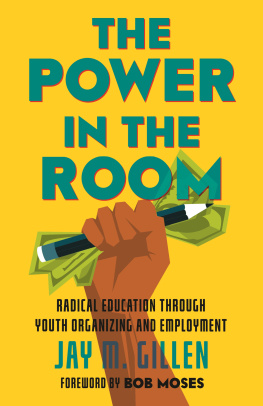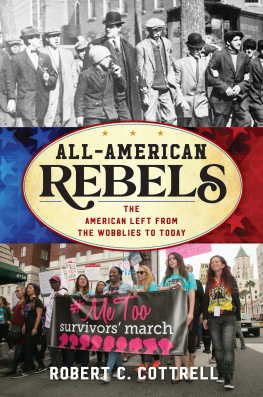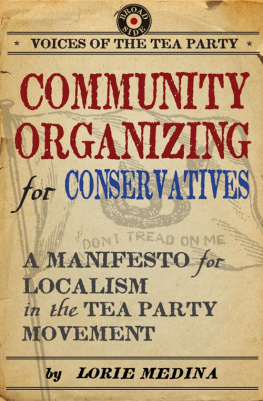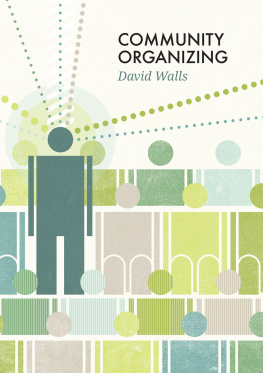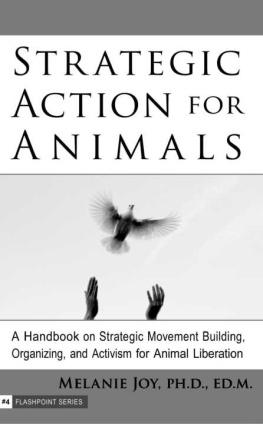Thank you for buying this ebook, published by NYU Press.
Sign up for our e-newsletters to receive information about forthcoming books, special discounts, and more!
Sign Up!
About NYU Press
A publisher of original scholarship since its founding in 1916, New York University Press Produces more than 100 new books each year, with a backlist of 3,000 titles in print. Working across the humanities and social sciences, NYU Press has award-winning lists in sociology, law, cultural and American studies, religion, American history, anthropology, politics, criminology, media and communication, literary studies, and psychology.
An Interracial Movement of the Poor
An Interracial Movement of the Poor
Community Organizing and the New Left in the 1960s
Jennifer Frost

NEW YORK UNIVERSITY PRESS
New York and London
2001 by New York University
All rights reserved
Library of Congress Cataloging-in-Publication Data
Frost, Jennifer, 1961
An interracial movement of the poor : community organizing and
the New Left in the 1960s / Jennifer Frost.
p. cm.
Includes bibliographical references and index.
ISBN 0-8147-2697-6 (cloth : alk. paper)
1. Community development, UrbanUnited StatesCase studies.
2. Economic Research and Action Project. I. Title.
HN90.C6 F77 2001
307.14120973dc21 2001002977
New York University Press books are printed on acid-free paper, and their binding materials are chosen for strength and durability.
Manufactured in the United States of America
10 9 8 7 6 5 4 3 2 1
For Paul and Cealagh
Contents
Acknowledgments
This is the best part of writing a book. I am most appreciative of the many activists of the 1960s New Left who took time out of their busy lives to talk with me about events some forty years past. Of particular help were Helen Garvy and Vivian Rothstein, who helped me locate people, and John Bancroft, Helen Garvy, D. Gorton, Nancy Hollander, and Stan Nadel, who provided photographs for the book. I also am grateful that Marge Grevatt aided Lillian Craig in recording and publishing her memoirs, and that Studs Terkel gave me permission to quote extensively from his books. The voices of Lillian Craig, Peggy Terry, and Dovie Thurman have enriched this book immensely.
Funding from the University of Wisconsin-Madison, in the form of a Graduate School Domestic Travel Fellowship, a Department of History Travel Grant, and a Marie Christine Kohler Fellowship, helped to support my dissertation research and writing. A Faculty Research and Publications Board Grant from the University of Northern Colorado allowed me to complete the book. The richness of the Social Action Collection at the State Historical Society of Wisconsin is what got me started on this project in the first place, and I have been aided over the years by archivists and staff, especially Harry Miller. It has been a pleasure to work with the editors at New York University Press, beginning with Niko Pfund, who encouraged me at the early stages, and ending with Jennifer Hammer, who saw the book through to completion.
I continue to appreciate the contributions of faculty, friends, and colleagues at the University of Wisconsin-Madison. Linda Gordons work on women, social movements, and the welfare state and commitment to politically engaged scholarship spurred me on both before and after the completion of the dissertation. The comments and suggestions of Paul Boyer, Roger Horowitz, Marie Laberge, Gerda Lerner, Tom McCormick, and Tim Tyson guided my revisions for the book. Providing critical feedback at different stages were David Gerwin, Felicia Kornbluh, Steve Max, David Myers, Peg Strobel, the readers for New York University Press, Alexander Bloom, and Rickie Solinger, my co-panelists at various conferences, including commentators Eileen Boris, Robert Fisher, Nancy Isenberg, and Tom Jackson, and my fellow participants in the 1996 NEH Summer Seminar for College Teachers on The History of American Women through Social Movements, with Kathryn Kish Sklar and Thomas Dublin, in Binghamton, New York, and at the University of Houstons Black History Workshop on The Civil Rights Movement: Local Perspectives, in 1997.
Family and friends, especially Marybeth Carlson, Eftihia Danellis, and Kathy Tatar, my siblings, Millicent and Jamie Frost, and my mother, Ann Frost, offered consistent and enthusiastic support over the years. Paul Taillons immeasurable contribution to this project ranged from discussing the big picture to reformatting endnotes. I am most thankful to them all for sharing the vision and values that were behind this project and for keeping me focused on what is truly important.
Abbreviations
| A(F)DC | Aid to (Families with) Dependent Children |
| AFL-CIO | American Federation of Labor-Congress of Industrial Organizations |
| CCAP | Citizens Crusade Against Poverty |
| CCP | Cleveland Community Project |
| CORE | Congress of Racial Equality |
| CUFAW | Citizens United for Adequate Welfare [Cleveland] |
| CWLU | Chicago Womens Liberation Union |
| ERAP | Economic Research and Action Project |
| FBI | Federal Bureau of Investigation |
| IAF | Industrial Areas Foundation |
| JOIN | Jobs or Income Now |
| LID | League for Industrial Democracy |
| MAW | Mothers for Adequate Welfare [Boston] |
| MWRO | Massachusetts Welfare Rights Organization |
| NAACP | National Association for the Advancement of Colored People |
| NCU | National Community Union [Chicago] |
| NCUP | Newark Community Union Project |
| NSM | Northern Student Movement |
| NWRO | National Welfare Rights Organization |
| OEO | Office of Economic Opportunity |
| PREP | Peace Research and Education Project |
| SCLC | Southern Christian Leadership Conference |
| SDS | Students for a Democratic Society |
| SNCC | Student Nonviolent Coordinating Committee |
| UAW | United Automobile Workers |
| UPPC | Uptown Peoples Planning Coalition |
| VISTA | Volunteers in Service to America |

Office of the Hill Neighborhood Union in New Haven, Connecticut, summer 1965. (Courtesy of John Bancroft.)
Introduction
During the summer of 1964, University of Michigan graduate Dave Strauss joined a community organizing project sponsored by the Students for a Democratic Society (SDS) on Clevelands Near West Side. SDSthe organization that came to be regarded as virtually synonymous with the white New Leftbegan community organizing under the auspices of its Economic Research and Action Project (ERAP) in 1963. Inspired by the Civil Rights Movement, SDS activists entered low-income neighborhoods to pursue what they first called community organization: bringing individuals living in the same residential area together into organizations to fight for their common interests. The ultimate and indeed lofty aim was to build an interracial movement of the poor to abolish poverty, end racial inequality, and extend democracy in America. Over the next few years, New Left organizers established thirteen official ERAP projects in predominantly black, white, and racially diverse neighborhoods; the largest, most successful, and longest-lasting projects were located in Chicago, Newark, Boston, and Cleveland. The son of Jewish Communists, Strauss had grown up in Cleveland and it made a lot of sense to go to Cleveland, which I knew, and try to make a difference. He joined other organizers, including fellow Michigan graduate Sharon Jeffrey, as well as Swarthmore College graduates Oliver Fein and Charlotte Phillips, and stayed for two and a half years, through the fall of 1966.
Next page


